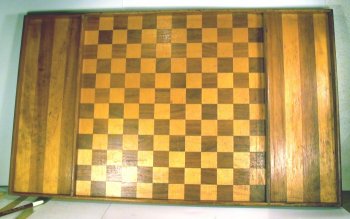Metamachy
An incredible depth, an
impressive complexity, a fascinating game finally
revealed in 2012.
Presentation
The name of Metamachy comes from a Greek root meaning "beyond the battle". At Metamachy, the number 12, symbol of perfection, is everywhere.
Metamachy is a board game for two players using a dozenal 12x12-square board.
There are 60 (5x12) pieces of 12 different types.
Each player has:
1 King, 1 Queen, 1 Eagle, 1 Lion, 2 Princes, 2 Bishops, 2
Knights, 2 Camels, 2 Rooks, 2 Cannons, 2 Elephants and 12
Pawns.
There is a choice of 12 different starting setups. Black chooses the setup and White makes the first move.
Goal is to checkmate the opposing King.
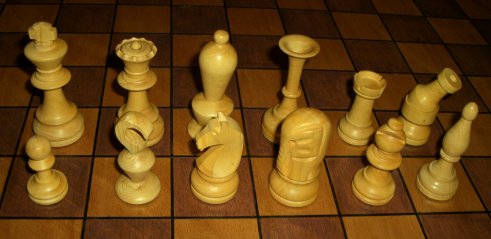
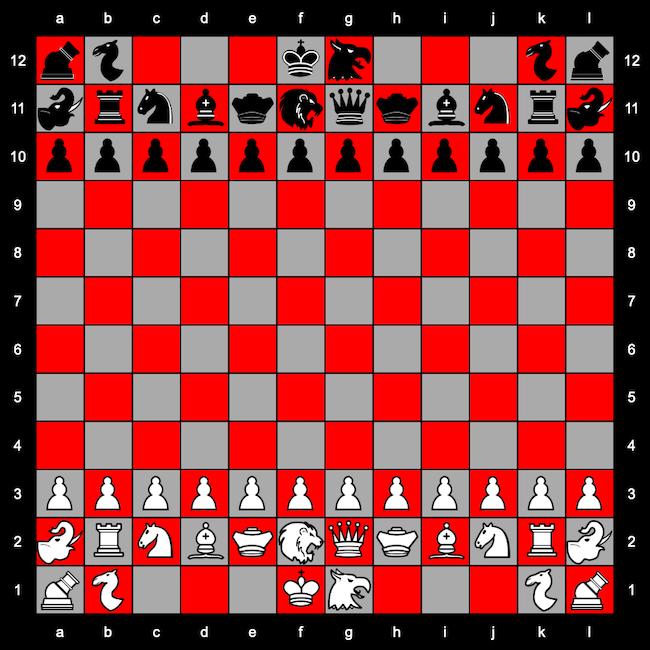
1 of the 12 possible starting positions
Moves
-
King: moves 1 step in every (8) directions on a not attacked square. The King is in check if it is attacked by one or several enemy pieces. It is forbidden to play a move letting his King in check.
-
There is no castling at Metamachy:
At his first move, the King may jump to a free square at two squares' distance. For instance, from f2, it can jump to d1, d2, d3, d4, e4, f4, g4, h4, h3, h2 or h1). It does not matter if the square jumped over is occupied or not; however, the jump is forbidden if that intermediate square is threatened by an enemy piece. When jumping like a Knight, at least one of the two intermediate squares must be free of threat (e.g., if jumping from f2 to h3, either g2 or g3 must not be under attack). The King's jump is not permitted if the King is in check. This rule, which was once prevalent in medieval European chess, replaces castling.
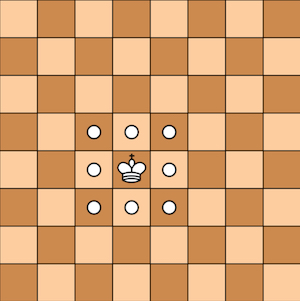
-
Queen: slides to any square along the file, the rank or a diagonal on which it stands.

-
Eagle: moves one square diagonally and then, slides away of an indefinite number of squares vertically or horizontally. It is authorized to go only one square diagonal. It can not jump and the unobstructed path must start with the diagonal movement. This piece is almost as powerful as the Queen and is inspired by the Giraffe from Tamerlane's Chess and the Aanca (a mythical giant bird preying elephants, mistaken for a gryphon) from Alfonso X's Grant Acedrex. This piece is also known as Gryphon in many chess variants.

-
Lion: moves as a King (a single step move in any direction), or may jump to a position two squares away, jumping in any orthogonal or diagonal direction, or jumping as a Knight. (Inspired by Chu Shogi, the most popular variant of the Japanese Chess, where the Lion has the same range but is more dreadful as it can move twice in a turn).
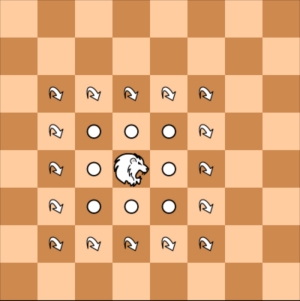
-
Bishop: slides to any square along a diagonal on which it stands. Note that it always stays on the same color of square.
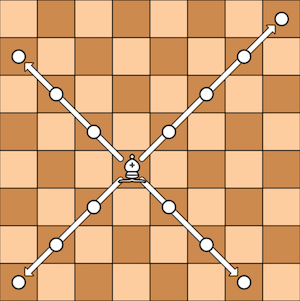
-
Knight: jumps to the opposite square of a 2x3 rectangle. No matter what the intermediate square contains. It is also described as a (2,1) leaper. Note that it always change the color of square at each move.
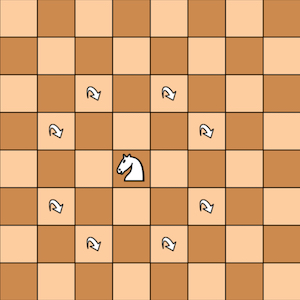
-
Camel: jumps to the opposite square of a 2x4 rectangle, like an extended Knight. No matter what intermediate squares contain. It is also described as a (3,1) leaper. Note that it always stays on the same color of square. A well known piece from medieval Muslim great Chess like Tamerlane's Chess.
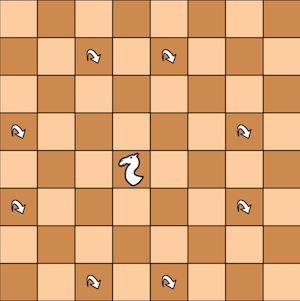
-
Rook: moves to any square along the file or the rank on which it stands.
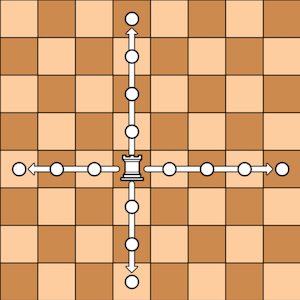
-
Cannon: exactly as in Shako, it is borrowed from Xiangqi. It moves without taking like a Rook, but it takes by going in a straight horizontal and vertical line and jumping over exactly one piece. When a Cannon takes a piece, there must be exactly one piece between the original and final square of the Cannon's move - this piece may be of either color.
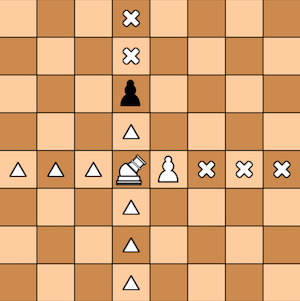
-
Elephant: exactly as in Shako. It moves one or two squares diagonally. When an Elephant moves two squares, no matter what intermediate squares contain. Note that it always stays on the same color of square. The Elephant moves as the combined Alfil and Firzan (Ferz) from Shatranj, two pieces which were also present in medieval Chess and have disappeared with the birth of modern moves for the Bishop and the Queen.
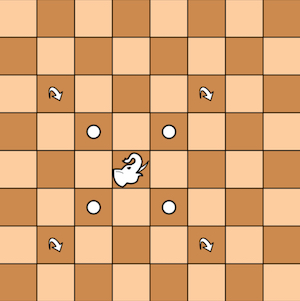
-
Prince: a non-royal King who moves and captures one square in any direction, but without being hindered by check. It has been inspired by medieval games like the Courier chess , an old chess variant, played in Germany, where it is called "Man". Like the Pawn, he can also move without capturing to the second square straight ahead from any position on the board.

-
Pawn: can move straight forward one or two square from any position on the board, without capturing. It captures one square diagonally forward.

-
Pawn and Prince Promotion: A Pawn or a Prince reaching the last rank of the board is immediately replaced by a Queen, an Eagle or a Lion. Promotion to any other type of piece is not allowed. It is permitted to promote a Pawn or Prince to a type of piece already present on the same side; however; it is considered "good etiquette" to avoid choosing a piece which is not captured yet, if possible.
Note that the Pawn must take at least five moves to reach promotion (taking double steps on rows 3 - 5 - 7 - 9 - 11 - 12), which is the same number of moves required for a Pawn in standard chess (rows 2 - 4 - 5 - 6 - 7 - 8).
- En Passant capture: Any time a Pawn or Prince takes a double step and passes through the capture square of an opposing Pawn, that Pawn may capture the Pawn or Prince as if it had only moved one square. This en passant capture must be made in the immediate move following the double step. Only a Pawn may capture en passant; the Prince does not have this option.
Setup rules
At the beginning all pieces but the Kings, Queens, Eagles and Lions are placed as follows:
-
1st row: Cannon / Camel / . / . / . / . / . / . / . / . / Camel / Cannon
-
2nd row: Elephant / Rook / Knight / Bishop / Prince / . / . / Prince / Bishop / Knight / Rook / Elephant
-
3rd row: 12 x Pawn
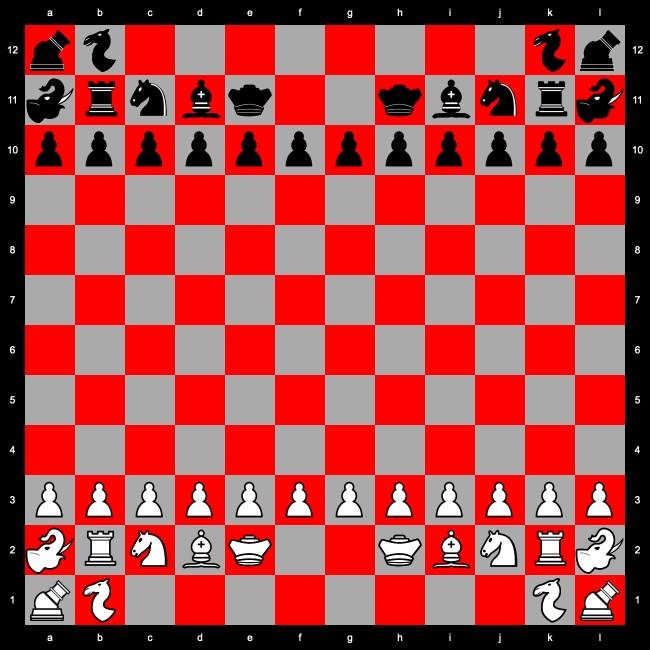
Then, Black freely decides where to place his King, Queen, Eagle and Lion on squares f11, g11, f12 and g12.
Then, White put his pieces symmetrically in mirror (if Black King is on f12, White King goes on f1) and makes the first move.
This agreement balances the advantage of White starting to play with Black choosing the setup.
As pieces are placed in mirror symmetry, positions of Kings on f squares are exactly equivalent of positions of King on g squares. Then, it can be demonstrated that it exists 12 different starting positions:
-
The King can be on f11 or f12: 2 choices
-
Then, the Queen has a choice of 3 positions: beside the King, beneath the King or diagonal to the King.
-
Then, the Eagle has a choice of 2 remaining positions.
-
Then, the left place is for the Lion. 2x3x2 = 12.
End Of Game: The end-of-game rules, checkmate, stalemate, etc., are identical to standard chess.
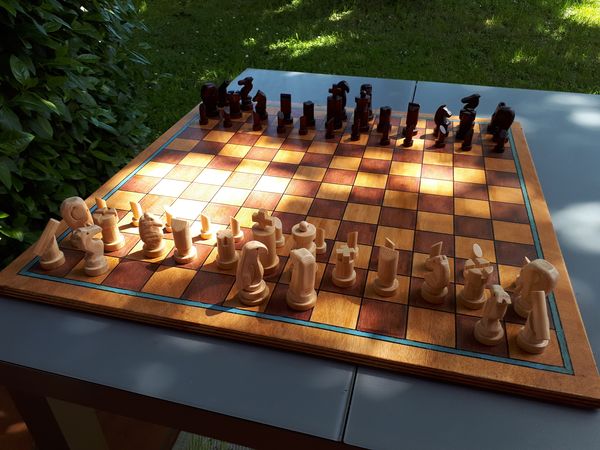

Homemade Metamachy set and board
Zillions gives these average values, normalized to 5 for the Rook :
Pawn: 0.8 ; Camel: 2.1 ; Elephant: 2.3 ; Knight: 2.4 ; Prince: 3.2 ; Bishop: 3.4 ; Cannon: 4.9 ; Rook: 5 ; Lion: 7.4 ; Eagle: 7.8 ; Queen: 8.2
A maybe more realistic estimate would be:
Pawn: 1 ; Camel: 2 ; Elephant: 2.5 ; Knight: 2.5 ; Prince: 3.5 ; Bishop: 3.5 ; Cannon: 4 ; Rook: 5 ; Lion: 7.5 ; Eagle: 8 ; Queen: 9
These values are just given for a very rough estimate. A lot of players would disagree and give less or more points to several piece.
You can play Metamachy if you own Z-o-G. Download this zip-file: cazauxchess.zip
Find Metamachy in the Chessvariants pages
There is a preset to play it there.
Read the very first book about this great game!
The book contains all rules, illustrated with many diagrams, a lot of technical considerations and some annoted games. It also reveals the incredible history and genesis of Metamachy.
The book is in French, but with many diagrams it is a must have also for English readers.
|
Un tablier de 12 x 12 cases. Un total de 5 x 12 pièces, de 12 types différents : Roi, Dame, Fous, Cavaliers, Tours, Pions mais aussi Aigle, Lion, Chameaux, Éléphants, Princes et Canons. 12 manières différentes de les disposer au départ ! |
Amazing: an old Metamachy board found in England
Diagrams made with the fantastic Chess Board Painting Tools provided by Musketeer Chess








